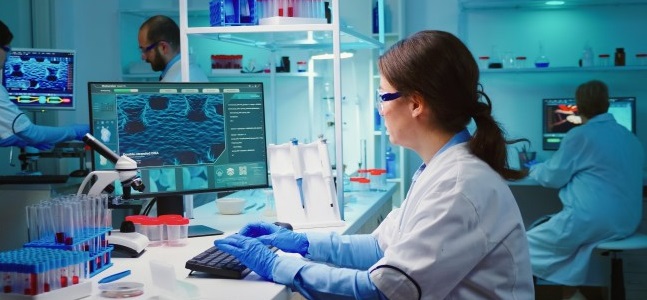Maternal and paternal relationships are key to understanding family dynamics and genetics. Though sometimes used interchangeably, they highlight different aspects of family connections. In this article, we will delve deeper into the differences between maternal and paternal relationships, exploring what they entail and why they are significant.
What is Maternal?
Maternal characteristics are related to the mother, grandmother, or the mother’s side of the family. Maternal are often associated with caring, loving behavior best steroid for muscle growth towards their children. These traits can include physical characteristics like the color of the eyes, genetic diseases, and emotional traits related to nurturing.
They are primarily carried in mitochondrial DNA, which is exclusively passed from mothers to their children. Maternal characteristics are determined by the X chromosome. Maternal traits are related to the female gender.
What is Paternal?
Paternal characteristics are related to the father, grandfather, or the father’s side of the family. Paternal traits include genetic characteristics passed down from father to child.
This includes the Y chromosome, which determines the male gender. Paternal characteristics are determined by both X and Y chromosomes. Paternal traits are related to the male gender.
Maternal vs Paternal – Key Differences
Maternal and paternal are adjectives used to describe things related to mothers and fathers, respectively. Derived from Latin, “maternal” comes from “Maternus,” meaning “of Mother,” while “paternal” originates from “Paternus,” meaning “of the father.” These terms can refer to biological connections, emotional bonds, behaviors, and more.
| Differences | Maternal | Paternal |
| Definition | Things related to the mother. | Things related to the father. |
| Relationships | Related to the mother, grandmother, or mother’s side of the family. | Related to the father, grandfather, or father’s side of the family. |
| Genetics | Mitochondrial DNA is passed exclusively from mothers to their children. | Y chromosome determines paternal characteristics and is passed from father to son. |
| Chromosomes | Determined by the X chromosome. | Determined by both X and Y chromosomes. |
| Gender | Traits related to the female gender. | Traits related to the male gender. |
| Terminologies | Shows feminine hierarchy. | Shows male hierarchy. |
The Importance of Maternal and Paternal Relationships
While the relationships between maternal and paternal relatives can vary significantly, both play essential roles in a child’s life. Research has shown that strong relationships with grandparents can have numerous benefits for children, including increased emotional support, improved self-esteem, and better social skills.
Maternal vs. Paternal Grandparents: Navigating Family Dynamics
Grandparents play a significant role in a child’s life, but the dynamics between maternal and paternal grandparents can differ significantly.
- Parental Gatekeeping: Mothers often play a significant role in directing their children’s activities and managing household matters, which can influence the relationship between grandparents and grandchildren.
- Geographical Distance: Proximity plays a crucial role in how often grandparents see their grandchildren.
- Number of Grandchildren: The more grandchildren a grandparent has, the more difficult it may be to spend quality time with each one.
- Divorce: The roles of maternal and paternal grandparents may change after a divorce. Maternal grandparents may become more involved if the mother gains custody of the children.
- Gender Roles and Expectations: Gender roles within families can affect grandparent-grandchild relationships. Often, maternal grandparents are more involved in care, while paternal grandparents may focus on teaching and discipline.
- Changing Dynamics: As society changes, the relationship between grandparents and grandchildren also evolves. Increased life expectancy, different family structures, and technological advancements influence these dynamics.
| Also Read:: How to get a Court-Ordered Paternity Test ?
Challenges Faced by Maternal Figures
- Societal pressure to prioritize family over career aspirations
- Gender-based discrimination and ‘motherhood penalty’ in the workforce
- Struggles with work-life balance and juggling multiple responsibilities
- Lack of support systems for mothers, especially single or working mothers
- The stigma surrounding mental health and challenges faced by mothers in seeking help
which can impact their well-being and ability to care for their children
- Limited parental leave policies and difficulty in returning to work after having a child
- Expectations of being the primary caregiver and managing household duties, lead to burnout and exhaustion.
Challenges Faced by Parental Figures
- Cultural expectations and societal norms around gender roles in parenting.
- The pressure to be the primary breadwinner and provide for their family financially.
- Limited parental leave policies and stigma surrounding taking time off work to care for children.
- Difficulty in balancing work demands with family obligations, resulting in burnout and stress.
- ‘Fatherhood penalty’ in the workforce when prioritizing family responsibilities.
- Lack of resources and support systems for fathers, especially single or stay-at-home fathers.
- Limited representation and recognition of the unique challenges faced by fathers in modern parenting.
Conclusion
In conclusion, maternal and paternal relationships are essential components of family life. Moreover, while they may differ in some respects, both types of relationships are valuable and can have a significant impact on a child’s development and well-being. By understanding the differences between maternal and paternal relationships, we can better appreciate the unique contributions that each family member makes to the lives of their loved ones.
FAQs
Maternal relationships are related to the mother’s side of the family, determined by mitochondrial DNA and the X chromosome, while paternal relationships are related to the father’s side, determined by the Y chromosome and both X and Y chromosomes.
Maternal and paternal relationships influence a child’s development, emotional well-being, and social skills, providing them with identity, support, and belonging. Understanding these differences helps appreciate each family member’s unique contribution to the family unit.




